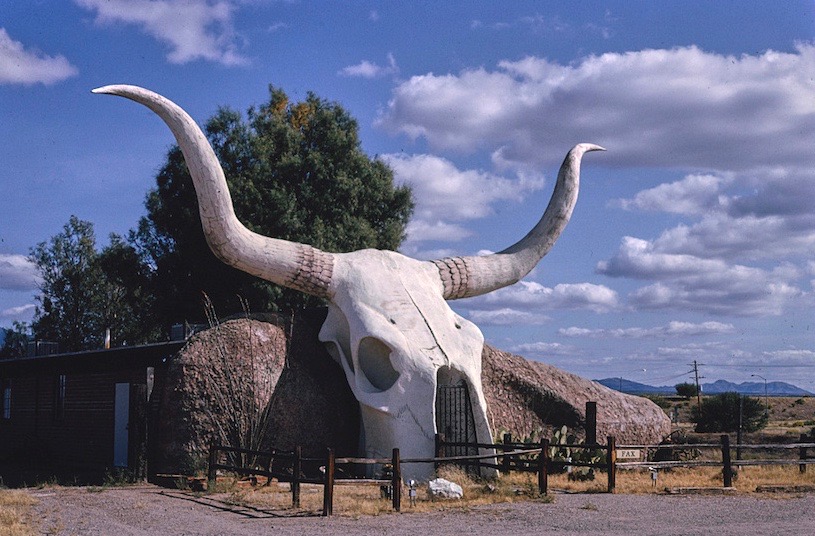MARIANI’S
Virtual Gourmet
November 20,
2019
NEWSLETTER
IN THIS ISSUE
IN SEARCH OF THE
PERFECT
LASAGNE VERDI ALLA BOLOGNESE
By John
Mariani
LOVE AND PIZZA
CHAPTER THIRTY-FOUR
NOTES FROM THE WINE CELLAR
UNFAMILIAR NAMES, VERY GOOD WINES
By John Mariani
❖❖❖
IN SEARCH OF THE
PERFECT
LASAGNE VERDI ALLA BOLOGNESE
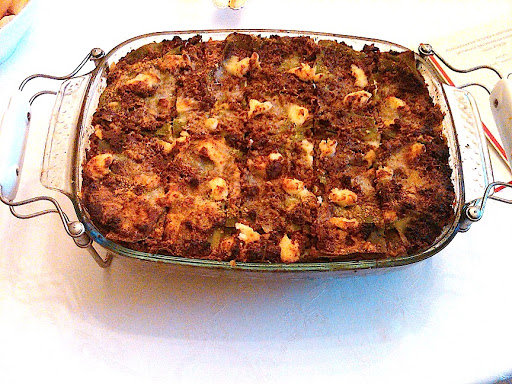
Ronnie Venturoli's unorthodox Lasagne alla Bolognese
It seemed such an easy quest: I just
wanted a recipe for one of the few Italian dishes
that might be pronounced a classic—lasagne verdi
alla bolognese, a dish as indelibly
associated with Emilia-Romagna’s capital city as Wienerschnitzel
is with Vienna and salade
Niçoise with Nice.
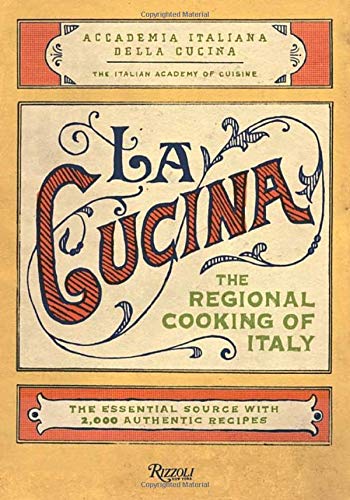 Yet,
aside
from the requisites that lasagne verdi
should be made with green spinach pasta, meat
ragù and besciamella,
asserting anything more definitive would be like
saying that, in all Renaissance paintings of the
Madonna and Child, the Madonna will be dressed in
red and blue and the Child will be chubby.
Yet,
aside
from the requisites that lasagne verdi
should be made with green spinach pasta, meat
ragù and besciamella,
asserting anything more definitive would be like
saying that, in all Renaissance paintings of the
Madonna and Child, the Madonna will be dressed in
red and blue and the Child will be chubby.
Pulling
down authoritative Italian cookbooks from my shelf
showed I was off to a bad start. From old
texts like La
Scienza in Cucina e l’Arte di Mangiare Bene
(1891) by Pellegrino Artusi to modern classics like
the massive, 928-page La Cucina: The
Regional Cooking of Italy by the
authoritative Accademia Italiana della Cucina, every
source backed away from a definitive recipe.
Confused
by all this questionable dogma, I decided the best
thing for me to do was to go directly to the source:
the beautiful city of Bologna (below)—long
called “Bologna
Grassa” (“fat Bologna”) for its rich and
lavish food—and find out exactly how the best cooks
in Emilia-Romagna make lasagne verdi.
Four days
of eating the dish did reveal a few things: first, I
found no “classic” version of the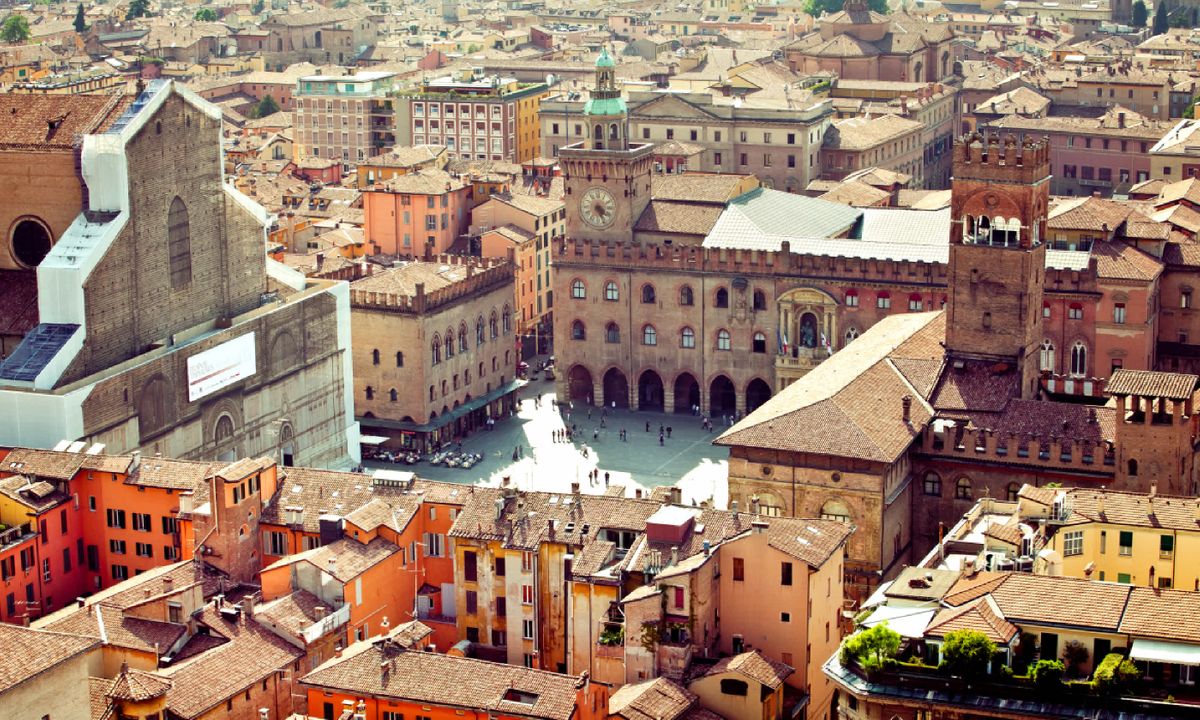 dish, despite the claims by many cooks that theirs
was the only
correct way
to make it; second, Bologna Grassa has lightened up
its cooking in recent years, so that few chefs now
cook the ragù
with livers, coxcombs, chicken eggs, nerve ganglia,
porcini,
or truffles, as they once did. In fact, I found the
lasagne I
tasted remarkably light, owing to the extreme
thinness of the pasta layers.
dish, despite the claims by many cooks that theirs
was the only
correct way
to make it; second, Bologna Grassa has lightened up
its cooking in recent years, so that few chefs now
cook the ragù
with livers, coxcombs, chicken eggs, nerve ganglia,
porcini,
or truffles, as they once did. In fact, I found the
lasagne I
tasted remarkably light, owing to the extreme
thinness of the pasta layers.
One
American cooking teacher in Bologna told me, “The
Bolognesi are very demanding people, and are very,
very critical at the dining table. Everyone
has an opinion on the proper lasagne,
and everyone will
have his or her own version, and, of course, it’s
the best!”
One
evening I ate at the home of Ronnie Venturoli, a
formidable red-headed woman in her late seventies
who is the self-proclaimed “regina di
lasagne verdi.”
She is part of a program called Homefood,
described as an “Association for the protection and
increase of the value of typical gastronomic and
culinary legacy,” through which visiting guests to
Italy may dine with one of their home cooks, called
“Le
Cesarine.”
Queen
Ronnie, who has a voice that could cut through a
wheel of Parmigiano, served me two lasagne,
one, her own creation, made with artichokes—“for
summer”—the other lasagne verdi,
for which she uses twelve layers of spinach pasta
rolled out with a long mattarello.
“Dodici
sfoglie! Like the twelve Apostles,” she said.
“I make them so thin you can see [the mountain of]
San Luca through them!” Night had set in, so I could
not test her contention, but these were indeed
exceptionally fine sheets of deep green pasta.
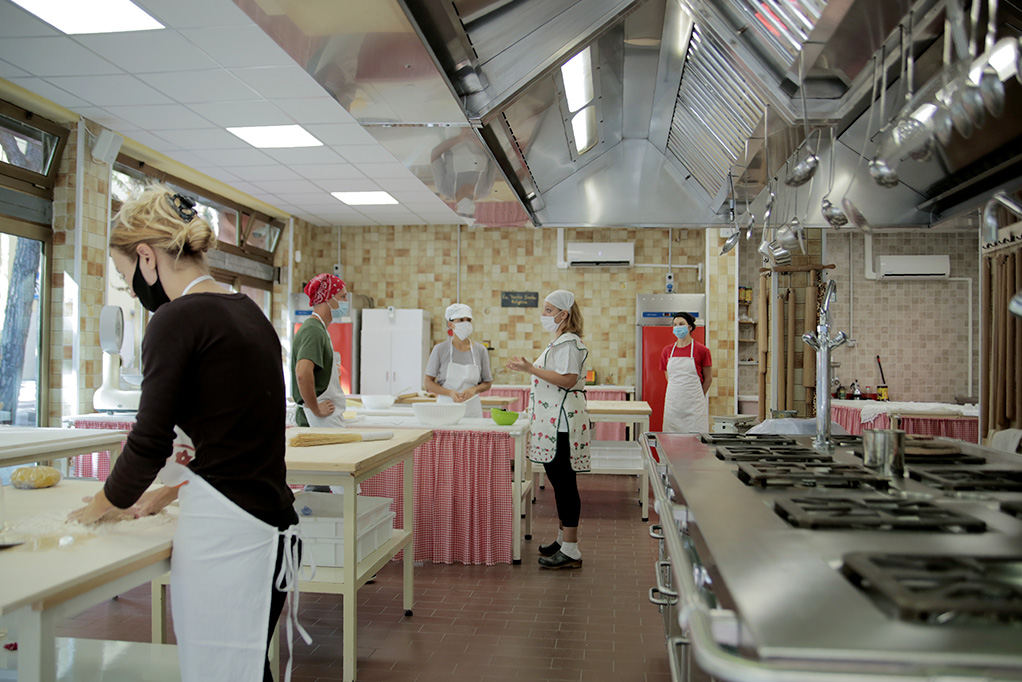 Ronnie’s
ragù is
made with roasted beef and, the holy trinity of
onions, carrot, and celery, and she cooks it in
water, not fat, with a little concentrate of tomato
and a touch of sugar. After simmering it all down
for three hours, she adds some olive oil and cooks
it for three more hours. Then she
layers the pasta sheets, alternately, with ragù and besciamella,
tops it all with Parmigiano and brings it to a
bubbling point when the besciamella
pops through the top sheet of pasta.
Ronnie’s
ragù is
made with roasted beef and, the holy trinity of
onions, carrot, and celery, and she cooks it in
water, not fat, with a little concentrate of tomato
and a touch of sugar. After simmering it all down
for three hours, she adds some olive oil and cooks
it for three more hours. Then she
layers the pasta sheets, alternately, with ragù and besciamella,
tops it all with Parmigiano and brings it to a
bubbling point when the besciamella
pops through the top sheet of pasta.
The next
morning, I attended La Vecchia
Scuola Bolognesi (right),
founded in 1993 by Alessandra Spisni, a generous,
gregarious woman devoted to spreading the gospel of
Bolognesi cuisine.
She told me that
she uses only beef, never pork, cut from the
shoulder and neck, pushed through a coarse grinder,
then sautéed in strutto
(pork fat). I
was running low on cherished beliefs. She puts the
meat in a sauté pan and cooks it at high heat to
brown it, then pours in one cup of red wine and one
or two cups—measured by eye—of tomato passato (puree),
with a little salt, but no pepper
whatsoever. Then she adds a cup of water and cooks
for two to three hours.
Meanwhile,
she makes the besciamella
by quickly thickening butter and flour, then adding
one liter of milk and a scraping of nutmeg, cooked
over low heat until slightly thicker than heavy
cream. She
then layers five sheets of pasta with small amounts
of the ragù
and besciamella
on each layer—“not too much of either
ingredient”—then lavishes the top with Parmigiano,
the completed dish to be baked at 180 degrees for 45
minutes.
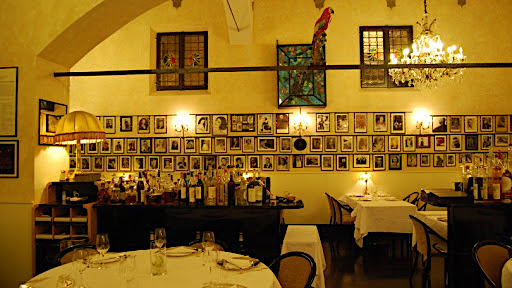 For lunch that
day I returned to a ristorante
I hadn’t visited in twenty years, back when every
celebrity from Gina Lollabrigida and Claudia
Cardinale to Sharon Stone and Lionel Richie dined
there and happily had their photo added to the walls
of the dining room at Pappagallo (left).
I was delighted to find it a better restaurant than
ever, thanks to a young chef named Ricardo Facchini
(below), who has brought delicacy and new
ideas to the traditional dishes that have always
been served there, including, of course, lasagne verdi.
For lunch that
day I returned to a ristorante
I hadn’t visited in twenty years, back when every
celebrity from Gina Lollabrigida and Claudia
Cardinale to Sharon Stone and Lionel Richie dined
there and happily had their photo added to the walls
of the dining room at Pappagallo (left).
I was delighted to find it a better restaurant than
ever, thanks to a young chef named Ricardo Facchini
(below), who has brought delicacy and new
ideas to the traditional dishes that have always
been served there, including, of course, lasagne verdi.
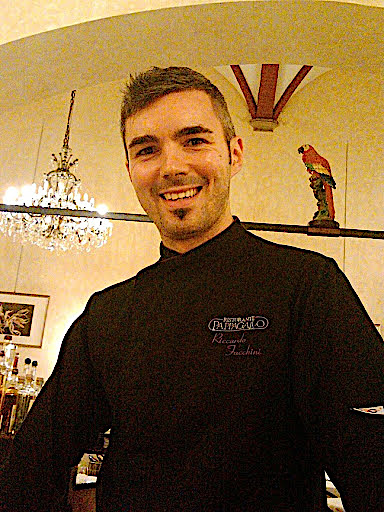
His version was made with a ragù based
on pork, not beef, chopped with a knife, not ground,
cooked in strutto.
“In the old days beef was too expensive, so pork
would have been used,” explained Facchini, “and
Emilia-Romagna really didn’t use olive oil until the
1950s. The green of the lasagne was
originally from nettles, but now spinach is used.”
Facchini’s
version was superb, the layers thin and artfully
cut, the melding of ragù and besciamella
consistent, and the topping crisp and fragrant with
Parmigiano.
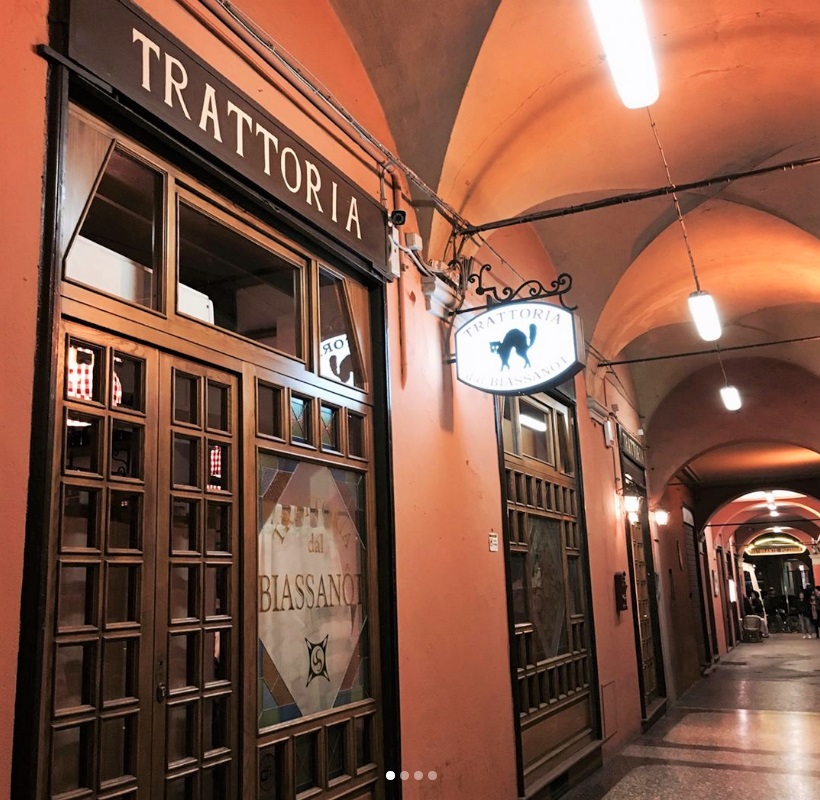 That evening I
dined al fresco at a revered trattoria named
Biassanot, a dialect word that means, roughly,
“night eater,” and the place was packed at least
until 11 p.m. with people feasting on lasagne verdi,
its pasta rolled out very thin and with considerable
pride. This rendering was five layers in height,
creamy but not overflowing with besciamella.
I was beginning to learn that balance, not
ostentatious display, was the key to lasagne verdi
and that the Bolognesi go white at the thought of
putting mozzarella, ricotta, and tomato sauce on
thick layers of pasta—as is the case in southern
Italian lasagne
recipes.
That evening I
dined al fresco at a revered trattoria named
Biassanot, a dialect word that means, roughly,
“night eater,” and the place was packed at least
until 11 p.m. with people feasting on lasagne verdi,
its pasta rolled out very thin and with considerable
pride. This rendering was five layers in height,
creamy but not overflowing with besciamella.
I was beginning to learn that balance, not
ostentatious display, was the key to lasagne verdi
and that the Bolognesi go white at the thought of
putting mozzarella, ricotta, and tomato sauce on
thick layers of pasta—as is the case in southern
Italian lasagne
recipes.
With one day to go, I balanced the trattoria
style with one of great posh. At lunch I
ate with gusto at Trattoria Annamaria, now a
quarter century old, where the appropriately stout
owner/chef, Annamaria Monari (below, with
her daughter), is not happy unless her guests
are full and very happy, and she loves nothing
better than to go to tables and explain every dish
ordered and those she’d like you to try. 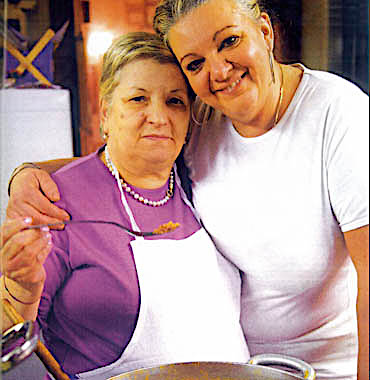
Annamaria’s lasagne begins
with a ragù
made with pancetta,
thinly sliced lardo,
two parts pork shoulder, one part beef, the former
cooked first, in
peanut oil. She
adds half a glass of milk and cooks it until it is
absorbed, and, along with the odori of
onion, carrot, and celery, adds a bit of tomato
concentrate, stirred in over a low flame. The ragù is
cooked slowly for three hours, till the fat comes to
the top. She
adds salt and
pepper, but no wine. “Wine is for drinking,” she
says.
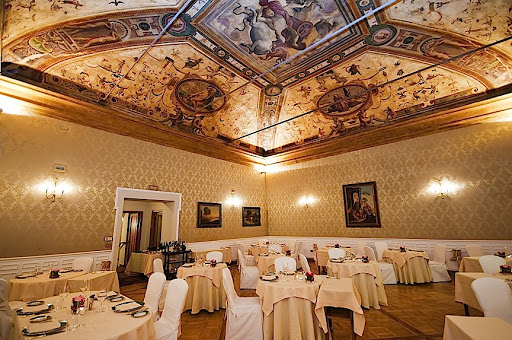 I tasted the
fragrant ragù
on its own, deeply flavorful with only a hint of
tomato and a perfect equilibrium of fat to lean in
the meat, which is chunkier than other versions I’d
had. The
pasta layers number five, and they were,
surprisingly, yellow-white, not green. “Lasagne
used to be a Sunday dish and was made with seven
layers, a holy, symbolic number,” she said.
“Nowadays, we make it lighter, with just five.”
I tasted the
fragrant ragù
on its own, deeply flavorful with only a hint of
tomato and a perfect equilibrium of fat to lean in
the meat, which is chunkier than other versions I’d
had. The
pasta layers number five, and they were,
surprisingly, yellow-white, not green. “Lasagne
used to be a Sunday dish and was made with seven
layers, a holy, symbolic number,” she said.
“Nowadays, we make it lighter, with just five.”
I had been staying at the very well-named
Majestic Hotel, so I dined there that evening in
their splendidly decorated ristorante
named I Carracci,
at a beautifully set table within walls faced with
silk, beneath a gorgeous ceiling fresco (left).
After
all the versions of lasagne I’d
had, I still found that when I became hungry each
day and evening, the idea of another portion of this
dish that I’d found in so many variants was still a
welcome surprise.
I Carracci’s lasagne was
the most beautiful of them all, served in the round
shape of an individual torta, its
layers folding inward, and it was set in a little
pool of remarkably light Parmigiano fondue, just
enough for each bite. When the captain came to ask
how I enjoyed it, he eyed my clean plate and said,
“Ah, the dish is talking for you.”
The next day, flying back
to the States, I thought about all the lasagne I’d
tasted and the recipes I was bringing back, and I
realized just about any of them would make a lasagne I
proudly could serve my own guests and pronounce it
to be a very typical example of how they do it in
Bologna. I
could hardly wait to get home and cook.
❖❖❖
By John Mariani
LOVE AND PIZZA
Since, for the time being, I am unable to write about or review New York City restaurants, I have decided instead to print a serialized version of my (unpublished) novel Love and Pizza, which takes place in New York and Italy and involves a young, beautiful Bronx woman named Nicola Santini from an Italian family impassioned about food. As the story goes on, Nicola, who is a student at Columbia University, struggles to maintain her roots while seeing a future that could lead her far from them—a future that involves a career and a love affair that would change her life forever. So, while New York’s restaurants remain closed, I will run a chapter of the Love and Pizza each week until the crisis is over. Afterwards I shall be offering the entire book digitally. I hope you like the idea and even more that you will love Nicola, her family and her friends. I’d love to know what you think. Contact me at loveandpizza123@gmail.com
—John Mariani
To read previous chapters go to archive (beginning with March 29, 2020, issue.
LOVE AND PIZZA
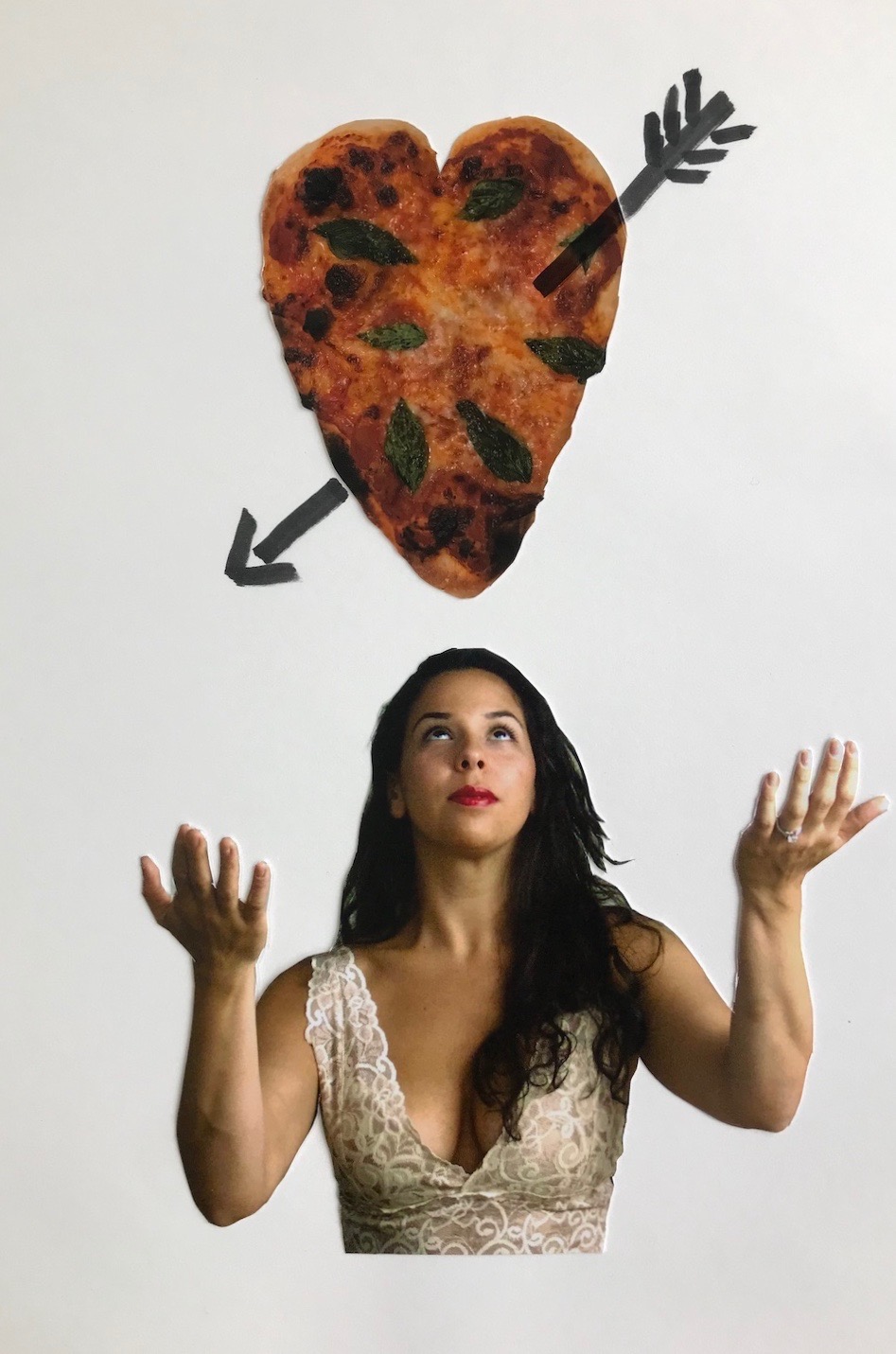
Cover Art By Galina Dargery
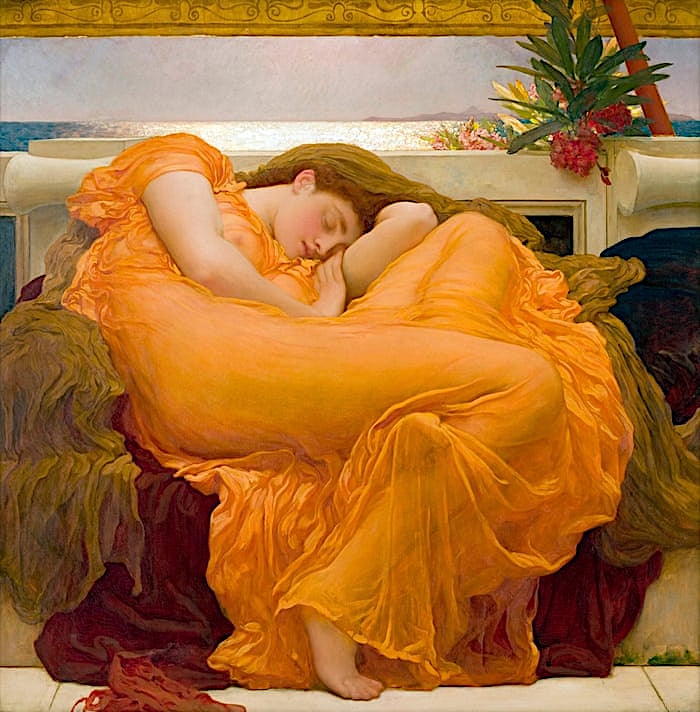
Nicola’s re-acclimation to New York,
the Bronx, and Belmont went more easily than
she’d thought it would. Maybe
the somewhat sour taste left by Giancarlo’s
parting had made home seem more welcoming. Maybe
it was just that she’d put Milan into
perspective, if never out of mind.
She was also buoyed by several bits of
news. First,
she got all A’s in her courses and her
professors said they’d be happy to write letters
of recommendation for grad school. Second,
Roseanne’s pregnancy was coming along just
fine—she was due in September—and that gave
everyone in the family something to busy
themselves with.
Third, Joe Bastone had finally agreed to
retire and sell Bella Napoli to Tony Jr , which
caused her brother yet again to beg Nicola to
help him with the re-design and to bring in
classy customers.
“Y’know, Nick,” he said, “before,
you were always this great looking local girl
who all the guys loved seeing at the restaurant. But
now you’re this big freaking superstar, and that
magazine—what's it called?”
“Willi.”
“Whatever.
That magazine is going to bring a lot of
attention to the Bronx. It’s a
shame they had to take the photos looking the
way the restaurant does now. But,
hey, you can't have everything at once, right?”
“Right,” said Nicola. “Let’s see what the
future brings.” And as soon as she said that,
she realized it was the middle of May and had
heard nothing definitive from Giancarlo. He did
call about once a week but not in the past
several days, and she didn't want to pester him. He had
said that work had allowed little let-up, but he
was determined to fly over at his earliest
chance.
Then one evening the phone rang and her
mother picked it up. “Nicky,” she shouted from
the living room, “It’s for you. Long distance.”
Bounding to the living room and shooing
her mother away, Nicola picked up the phone and
said, “Giancarlo?”
“Si,
Nicolina. How are you?”
“I’m fine, but why are you calling at,
what is it, three in the morning over there?”
“I have bad news, Nicola. My father has
passed away.
I’m at the hospital now.”
Nicola gasped, then asked how it
happened.
“Well, you know he was old and very ill,
and basically everything just stopped working. He had
chest pains and we brought him to the hospital
but he was gone by then.”
Nicola felt
selfish even thinking that this meant Giancarlo
would not be flying to New York that month, and
she tried to express sincere condolences to
Giancarlo and his family. After
a few more minutes of going into the details of
the marchese’s death and the arrangements for
his funeral, which, given Marchese Dorando
Cavallacci’s status as both an industrialist and
an aristocrat, would be covered as a major news
story, Giancarlo addressed what he knew was
going through Nicola’s mind.
“Listen, Nicolina,” he began, “this is
very sad for me and my family and there is no
way I can fly over this month to see you. It
breaks my heart but I know you understand.”
“Of course I do,” said Nicola, already
feeling the sand shifting beneath her feet.
“And there’s more to say, Nicola.”
Nicola Santini braced herself for what
she was sure she was about to hear.
“With my father’s death, everything
having to do with the company will be thrown
into turmoil, not chaos, but turmoil. He
ruled the company with an iron fist and made
many alliances and a few enemies. Now
they will all try to get their piece of the
company, mount a takeover, put us
out of business, whatever they are thinking.
“I know I’ve told you how I myself might
want to sell off part of the company at some
point, but now, with my father dead, I am going
to have to devote all my time and energy just to
keeping the company from breaking apart. I have
absolutely no idea how long this is going to
take. A
year, two years, the rest of my life? I just
don’t know.”
Nicola held her hand over the phone,
feeling the burn of tears in her eyes. She said
nothing. Giancarlo went on: “Of
course that means that I won’t be able to come
to the U.S. any time soon—unless, of course, I
come on business.
“You can’t imagine how much I’ve missed
seeing you, Nicolina, but I suppose I believed
my father would never die and I wouldn't have to
take up where he left off so soon. I am
also getting a great deal of pressure from my
mother and family about getting married and
keeping the family a strong unit, having a son
who will continue our name and all that means.”
“I thought you said all that didn't
matter much to you,” said Nicola.
“It always mattered, Nicolina, but
nothing like it did to my father and his father. Believe
me, I don’t care anything about the title. For me
it’s finished.
Still, I am a Cavallacci, and such things
mean a lot to my extended family.”
“So what does this mean for you and me in
the future?” asked Nicola.
“I don’t know, Nicolina. Everything
is up in the air right now. All I
know now is that I hope we will see each other
again.”
And upon hearing that quietly civilized
sentiment, Nicola knew that it was unlikely she
would ever see Giancarlo again. She
realized that he was trying to say they might
still be good friends in the future and that he
hoped he might see her someday in Italy. Or
perhaps he might one day visit New York on
business.
Perhaps, she thought, Giancarlo would
grieve over not seeing her again but she also
knew the grief over his father and the herculean
decisions he would soon have to make about the
company and his family far outweighed the
blissful little romance he’d had with the nice
American girl.
It was Nicola who brought the
conversation to a close, saying, “Giancarlo, you
must be exhausted. I’m so sorry about your
father. I
guess we both lost two people we loved this
year—my grandmother and now your father.”
But, after she hung up, it
occurred to her that there were really four
people, for Nicola Santini and Giancarlo
Cavallacci had lost each other that night.
© John Mariani, 2020
UNFAMILIAR NAMES, VERY GOOD WINES
By John Mariani

"Sylvia Scarlett" (1935)
What’s in name?
As with any in life, plenty, and in the world of
wine names count heavily and are heavily promoted. But that
world is also changing year by year by year, with
new wineries appearing and old brands coming out
with new ones.
Here are some you may never have heard of
but will want to try.
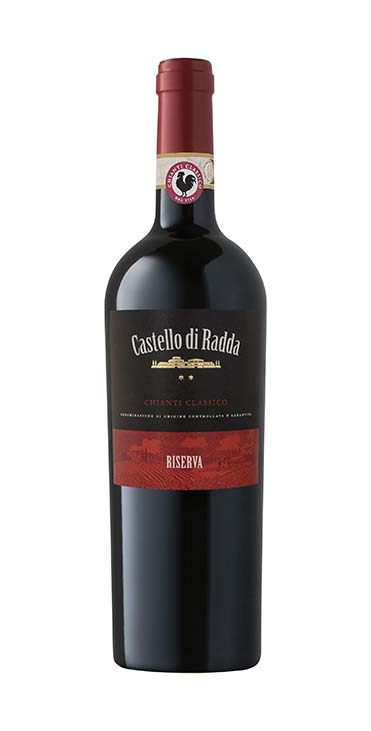 CASTELLO DI RADDA 2018
($36)—The
Radda region of Tuscany is known for its difficult
terroir, which has hard soil, is poor in organic
matter and colder than others in the province. But
challenging soil can make for strong grapes, and
Castello de Radda shows how well the wine ca be made
in a good vintage like 2018. Aged six months before
release, the Sangiovese softens and gives off a
vibrancy that makes it worthwhile drinking right
now.
CASTELLO DI RADDA 2018
($36)—The
Radda region of Tuscany is known for its difficult
terroir, which has hard soil, is poor in organic
matter and colder than others in the province. But
challenging soil can make for strong grapes, and
Castello de Radda shows how well the wine ca be made
in a good vintage like 2018. Aged six months before
release, the Sangiovese softens and gives off a
vibrancy that makes it worthwhile drinking right
now.
ESCUDO
ROJO GRAN RESERVA 2018 ($22)—The
name doesn’t suggest the pedigree, which is Baron
Philippe de Rothschild, and the wine actually is a
Chilean blend in the Médoc style, 40% Cabernet
Sauvignon, 38% Carmenere, 20% Syrah and 2% Cabernet
Franc. It’s an impressive piece of work, especially
at this price,
and would make a fine addition to any table
of red meats, no matter how luxurious that table
mighty be.
ISCAY
2015 ($53)—Another
unknown name on the bottle, but the company is the
renowned Trapiche, and the Malbec from Gualtallary
and Cabernet Franc from Altamira are grown in high
altitudes and cool weather. It ages 12 months in new
oak, blended, then aged in French oak for another
six months before spending 24 months in bottle. It
all comes together, and, despite its 14.5% alcohol,
it is not too much of a mouthful, making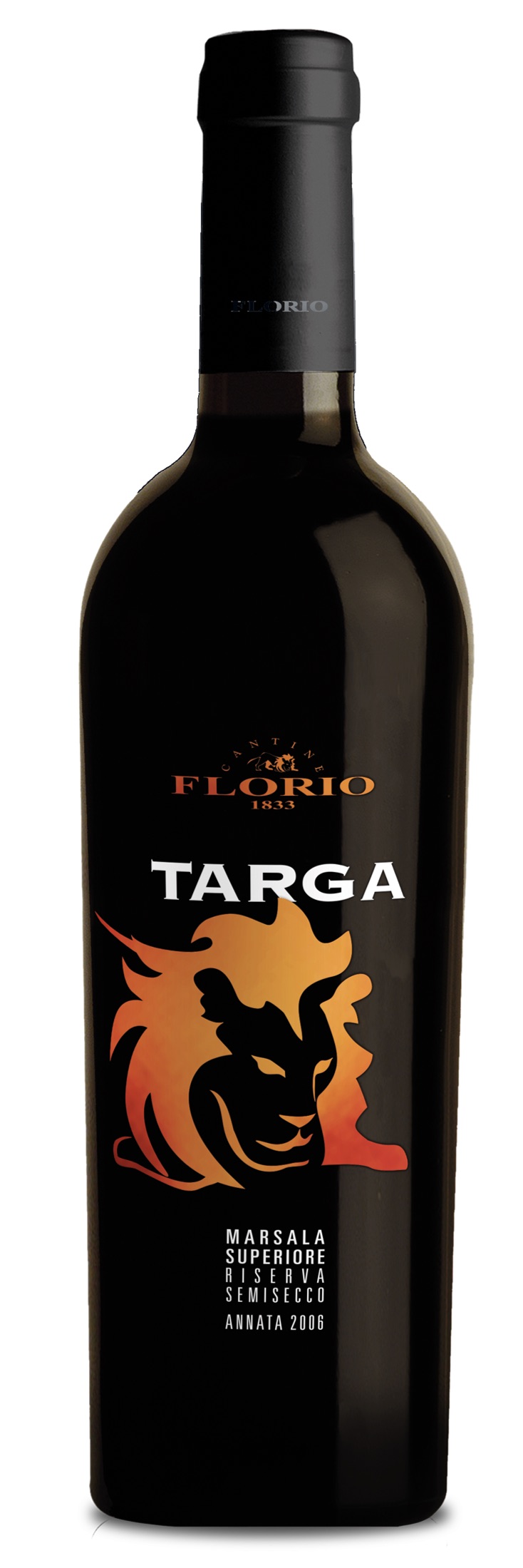 for a flexible wine to
match up with many dishes, including chicken.
for a flexible wine to
match up with many dishes, including chicken.
TARGA
MARSALA SUPERIORE RISERVA SEMI-DRY ($31)—I’ll
bet it’s been a long time since you’ve had Marsala,
unless it was whipped into zabaglione, but this
splendid Riserva shows that the wine can go
toe-to-toe with the best Sherry, Tinto Ports and
Madeiras. It has a lovely, light sweetness and fine
nuances throughout, to be enjoyed all on its own or
with roasted chestnuts and cookies.
ARGENTIERA
BOLGHERI
SUPERIORE 2017 ($100) and POGGIO AI
GINEPRI 2018 ($22)—There is a big difference
in price between these two Argentiera Tuscan wines,
made on the I Pianali plateau, from highly calcerous
soil and vineyards unusually well-protected from
heat and swept by sea breezes.Made with 50% Cabernet
Sauvignon, 40% Merlot and 10% Cabernet Franc, they
spend time in barriques and bottle. Quantities of
grapes were limited in 2017. The Bolgheri Superiore
is a very delicious wine with many flavor notes, but
for one-fifth the price the Poggio is quite
beautiful on its own, if higher in alcohol.
PASSETI TENUTAROSSA
MONTEPULCIANO D’ABRUZZO 2015
($12)—Passeti has proven itself among Abruzzese
wineries that can make the most of the underrated
Monteplulciano grape. This is a wine of finesse but
it has the boldness of its tradition, which has
always been earthy and rustic in that part of the
world. Excellent with pastas made with tomato sauces
and spice. I was amazed at its modest price.

Any of John Mariani's books below may be ordered from amazon.com.
 The Hound in Heaven
(21st Century Lion Books) is a novella, and
for anyone who loves dogs, Christmas, romance,
inspiration, even the supernatural, I hope you'll find
this to be a treasured favorite. The story
concerns how, after a New England teacher, his wife and
their two daughters adopt a stray puppy found in their
barn in northern Maine, their lives seem full of promise.
But when tragedy strikes, their wonderful dog Lazarus and
the spirit of Christmas are the only things that may bring
his master back from the edge of despair.
The Hound in Heaven
(21st Century Lion Books) is a novella, and
for anyone who loves dogs, Christmas, romance,
inspiration, even the supernatural, I hope you'll find
this to be a treasured favorite. The story
concerns how, after a New England teacher, his wife and
their two daughters adopt a stray puppy found in their
barn in northern Maine, their lives seem full of promise.
But when tragedy strikes, their wonderful dog Lazarus and
the spirit of Christmas are the only things that may bring
his master back from the edge of despair. WATCH THE VIDEO!
“What a huge surprise turn this story took! I was completely stunned! I truly enjoyed this book and its message.” – Actress Ali MacGraw
“He had me at Page One. The amount of heart, human insight, soul searching, and deft literary strength that John Mariani pours into this airtight novella is vertigo-inducing. Perhaps ‘wow’ would be the best comment.” – James Dalessandro, author of Bohemian Heart and 1906.
“John Mariani’s Hound in Heaven starts with a well-painted portrayal of an American family, along with the requisite dog. A surprise event flips the action of the novel and captures us for a voyage leading to a hopeful and heart-warming message. A page turning, one sitting read, it’s the perfect antidote for the winter and promotion of holiday celebration.” – Ann Pearlman, author of The Christmas Cookie Club and A Gift for my Sister.
“John Mariani’s concise, achingly beautiful novella pulls a literary rabbit out of a hat – a mash-up of the cosmic and the intimate, the tragic and the heart-warming – a Christmas tale for all ages, and all faiths. Read it to your children, read it to yourself… but read it. Early and often. Highly recommended.” – Jay Bonansinga, New York Times bestselling author of Pinkerton’s War, The Sinking of The Eastland, and The Walking Dead: The Road To Woodbury.
“Amazing things happen when you open your heart to an animal. The Hound in Heaven delivers a powerful story of healing that is forged in the spiritual relationship between a man and his best friend. The book brings a message of hope that can enrich our images of family, love, and loss.” – Dr. Barbara Royal, author of The Royal Treatment.
 |
The Encyclopedia of American Food and Drink by John F. Mariani (Bloomsbury USA, $35) Modesty forbids me to praise my own new book, but let me proudly say that it is an extensive revision of the 4th edition that appeared more than a decade ago, before locavores, molecular cuisine, modernist cuisine, the Food Network and so much more, now included. Word origins have been completely updated, as have per capita consumption and production stats. Most important, for the first time since publication in the 1980s, the book includes more than 100 biographies of Americans who have changed the way we cook, eat and drink -- from Fannie Farmer and Julia Child to Robert Mondavi and Thomas Keller. "This book is amazing! It has entries for everything from `abalone' to `zwieback,' plus more than 500 recipes for classic American dishes and drinks."--Devra First, The Boston Globe. "Much needed in any kitchen library."--Bon Appetit. |
"Eating Italian will never be the same after reading John Mariani's entertaining and savory gastronomical history of the cuisine of Italy and how it won over appetites worldwide. . . . This book is such a tasteful narrative that it will literally make you hungry for Italian food and arouse your appetite for gastronomical history."--Don Oldenburg, USA Today. "Italian
restaurants--some good, some glitzy--far
outnumber their French rivals. Many of
these establishments are zestfully described
in How Italian Food Conquered the World, an
entertaining and fact-filled chronicle by
food-and-wine correspondent John F.
Mariani."--Aram Bakshian Jr., Wall Street
Journal.
"Equal parts
history, sociology, gastronomy, and just
plain fun, How Italian Food Conquered the
World tells the captivating and delicious
story of the (let's face it) everybody's
favorite cuisine with clarity, verve and
more than one surprise."--Colman Andrews,
editorial director of The Daily
Meal.com. "A fantastic and fascinating
read, covering everything from the influence
of Venice's spice trade to the impact of
Italian immigrants in America and the
evolution of alta cucina. This book will
serve as a terrific resource to anyone
interested in the real story of Italian
food."--Mary Ann Esposito, host of PBS-TV's
Ciao
Italia. "John Mariani has written the
definitive history of how Italians won their
way into our hearts, minds, and
stomachs. It's a story of pleasure over
pomp and taste over technique."--Danny Meyer,
owner of NYC restaurants Union Square
Cafe, The Modern, and Maialino.
|
 |
 |
 |
 |
 |
 |
 |
 |
 Everett Potter's Travel Report:
Everett Potter's Travel Report: 
 Eating Las
Vegas JOHN CURTAS has been covering
the Las Vegas food and restaurant scene
since 1995. He is the co-author of EATING LAS
VEGAS – The 50 Essential Restaurants (as
well as the author of the Eating Las
Vegas web site: www.eatinglasvegas.
He can also be seen every Friday morning as
the “resident foodie” for Wake Up With the
Wagners on KSNV TV (NBC) Channel 3 in
Las Vegas.
Eating Las
Vegas JOHN CURTAS has been covering
the Las Vegas food and restaurant scene
since 1995. He is the co-author of EATING LAS
VEGAS – The 50 Essential Restaurants (as
well as the author of the Eating Las
Vegas web site: www.eatinglasvegas.
He can also be seen every Friday morning as
the “resident foodie” for Wake Up With the
Wagners on KSNV TV (NBC) Channel 3 in
Las Vegas.
MARIANI'S VIRTUAL GOURMET
NEWSLETTER is published weekly. Publisher: John Mariani. Editor: Walter Bagley. Contributing Writers: Christopher Mariani,
Robert Mariani, Misha Mariani, John A. Curtas, Gerry Dawes, Geoff Kalish,
and Brian Freedman. Contributing
Photographer: Galina Dargery. Technical
Advisor: Gerry
McLoughlin.
If you wish to subscribe to this
newsletter, please click here: http://www.johnmariani.com/subscribe/index.html
© copyright John Mariani 2020
